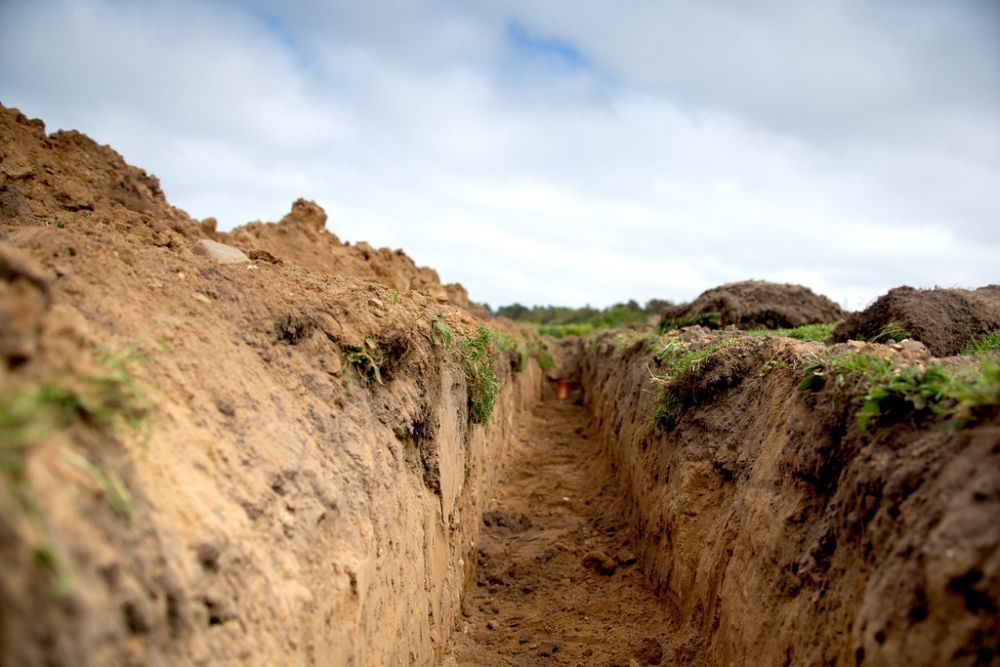
How (and Why) to Install a Fence with Buried Mesh
Most fences end an inch or two (about 50mm) above finished grade or natural ground level.
However, sometimes, a client or site requires a little more security, and they might ask for a fence installed with buried mesh. Let’s take a closer look at why you might want a fence with buried mesh and a step-by-step guide to installing a fence with buried mesh.
Why Would You Want a Fence with Buried Mesh?
The first thing you might be wondering is why you might want a fence with buried mesh and whether it’s the right solution for your property or site.
There are several reasons why fence companies install fences with buried mesh.
Often, it’s done to keep animals out (or in). Many wild animals are great at digging, and when fences are installed around nature reserves or along highways, fence contractors often bury some mesh in the ground to help prevent that from happening.
Domestic animals like dogs, chickens, and rabbits can also dig and wiggle under regular fences, and predators that attack livestock can also find their way under ordinary fences. So fences with buried mesh make sense in that situation, too.
Finally, there’s a whole different kind of animal – people. When you’re installing a higher security fence, you might want to have a section of buried mesh, too, to prevent people from digging under your fence or, if you have a more flexible type of fence, like chain link, from lifting the lower edge of your fence and going under it!
How Much Mesh Do You Usually Bury?
The good news is that, usually, you won’t be burying a lot of mesh. Many fence systems with buried mesh only have about a foot or 30 cm of mesh in the ground.
The exception is usually some of the wildlife fences, which often have an “apron” of wire mesh that might extend about a meter or a yard into the attack side of the fence at an angle, so even if animals try to dig further away from the fence, they’d be prevented from getting through.
Installing a Fence with Buried Mesh: Step-by-Step Guide
Now that you know what fences with buried mesh are and why we might do them, the next thing you probably want to know is how it’s done, so here’s a quick step-by-step guide.
1. Install Longer Posts
If you’re going to be installing a continuous strip of wire mesh under your fence, you can’t have concrete footings or bases in the way, so the first thing you want to do is install longer posts.
Simply add whatever the depth of mesh you’re installing to your fence post length, and have your posts cut accordingly.
2. Trench Along Your Fence Line
The next step in installing a fence with buried mesh in the most efficient way possible is to trench along the fence line. You can do this by hand if you have a fairly short fence line, but if you have a longer fence to install, you will want to use an excavator or a trencher to do this job.
3. Mark, Dig and Install Posts
Once you have your trench dug, the next step you will need to do to install a fence with buried mesh is to mark, dig and install your posts.
Again, you can dig your holes by hand if you only have a few posts to install, but if you have a longer fence to install, you will want to use an augur or another digging tool to prepare the holes for your fence.
Once the holes are in place, you can install your posts and pour your concrete, then leave them to set according to the concrete manufacturer’s recommendations or the fence specification.
4. Install the Rest of Your Fence
Now that you’ve installed your posts, it’s time to install the rest of your fence, including the section of mesh that will be installed in the trench below your fence.
With the trench still open and your concrete below the level of your buried mesh, you should be able to install your mesh and wire without any trouble.
Use a bottom wire and tie your mesh to the bottom of each post to add an extra layer of security and make the mesh harder to get through.
5. Backfill and Compact
Once your fence is installed and your mesh and wire are tied and finished, the final step in installing a fence with buried mesh is to backfill your trench and compact along the fence line.
Compacting doesn’t have to be perfect since it’s not structural, but for longer fence lines, a walk behind compactor is probably the easiest for this job, once the dirt has been placed.
You can also water along the fence line to help the dirt settle and ensure that the mesh is firmly in place.
An Easy Under Fence Security Measure
Now that you’ve read the step-by-step guide to installing fences with buried mesh, you can see that while there’s a little extra labor involved, it’s not all that difficult to do this kind of fence.
Not all fence companies will offer this kind of fence installation, though, and you might have to find one that offers commercial fence installation.


